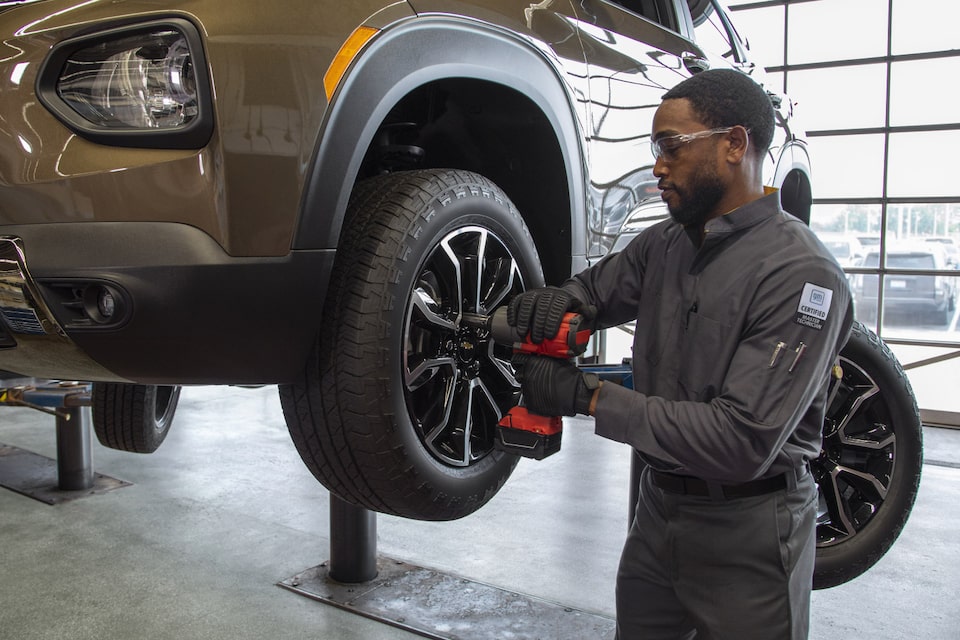Professional Morris Tire and Alignment Solutions: Make Sure a Smooth and Safe Drive
Professional Morris Tire and Alignment Solutions: Make Sure a Smooth and Safe Drive
Blog Article
Tire Service: The Impact of Weather
When it comes to ensuring optimal efficiency and safety and security on the roadway, understanding the effect of weather condition conditions on tire solution is critical. In this discussion, we will certainly explore the complex relationship in between climate conditions and tire solution, dropping light on the significance of weather-specific tire upkeep practices and considerations.
Heat and Tire Performance
When subjected to heats, tires experience adjustments in performance that can substantially affect car security and handling. The warmth generated from extended driving or warm climate conditions triggers the tire rubber to soften, bring about reduced step life and boosted wear. As the rubber ends up being softer, the tire's grip on the roadway diminishes, affecting braking distances and overall grip. In extreme situations, excessive warm can also trigger tire blowouts, presenting a severe safety and security danger to the vehicle and its passengers.
Moreover, high temperature levels can increase the process of tire aging, creating the rubber to weaken quicker. This can lead to splits, protrudes, and other kinds of damage that endanger the structural honesty of the tire. To mitigate the results of warm on tire performance, motorists need to on a regular basis check their tire stress, rotate tires to make certain even put on, and check for any type of signs of damage. Additionally, utilizing tires especially designed to stand up to heats can aid keep ideal performance and safety and security on the roadway.
Winter Impacts
Winter problems can have a significant effect on tire performance and safety. As temperatures decline, tire rubber can harden, resulting in lowered traction on icy or snow-covered roads. In winter, tires might likewise lose air stress extra quickly, which can affect dealing with and fuel effectiveness. Furthermore, chilly temperature levels can cause tire sidewalls to tense, boosting the threat of damages from fractures or other roadway risks.
To mitigate the results of winter on tires, it is important to consistently check tire pressure and inflate them to the maker's recommended levels. Making use of winter months or all-season tires developed for cold weather condition conditions can additionally boost traction and grasp on icy or snowy roads - tires morris il. Proper tire maintenance, consisting of routine examinations for wear and damage, becomes even much more critical throughout colder months to make certain optimum performance and safety
Rainy Conditions Effect
During wet conditions, tire efficiency and safety and security can be dramatically affected by the damp roadway surface areas and reduced visibility. The tread pattern of tires plays an important duty in maintaining grip on damp roads. Tires with worn-out footsteps are a lot more vulnerable to hydroplaning, where a layer of water develops up in between the roadway and the tire surface, leading to loss of grip. To fight this, motorists must frequently inspect their tires for sufficient walk depth and think about spending in tires specifically designed for damp problems.

Snow and Tire Safety And Security
Snow-covered roadways posture one-of-a-kind difficulties for drivers, stressing the importance of appropriate tire selection and upkeep. When driving in snowy conditions, having the appropriate tires can make a substantial distinction in safety and performance. Winter season tires are created with special rubber compounds and walk patterns to provide far better traction on snow and ice contrasted to all-season tires. The deeper treads and sipes of winter tires assist grip the road better, minimizing the risk of slipping and gliding.
Along with utilizing winter season tires, it is essential to ensure they are effectively pumped up. Cold climate can cause tire pressure to drop, influencing grip and handling (morris tire and alignment). Frequently checking and keeping the correct tire pressure is anchor necessary for optimum efficiency in snowy problems

Weather-Related Tire Maintenance
Weather-related tire maintenance encompasses an array of practices aimed at guaranteeing optimum tire function and durability in different climate situations. One vital aspect of weather-related tire maintenance is tire stress law. Checking tire tread regularly and changing tires when step wear reaches a particular depth is important for preserving grip and stability in adverse climate.
Final Thought
Finally, climate condition have a considerable influence on tire efficiency and article source safety and security. From warmth influencing tire stress and put on to winter lowering traction, it is vital to think about the climate when keeping and making use of tires. Wet problems can lower grip and cause hydroplaning, while snow can increase the risk of mishaps if tires are not properly outfitted. Weather-related tire maintenance is critical in guaranteeing great post to read optimum performance and safety when traveling.
In this conversation, we will certainly discover the elaborate partnership between weather condition conditions and tire solution, losing light on the value of weather-specific tire maintenance techniques and considerations.

Report this page